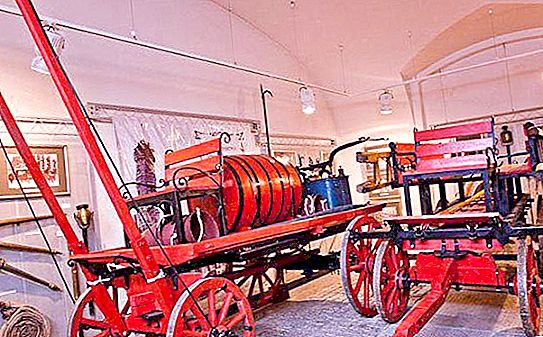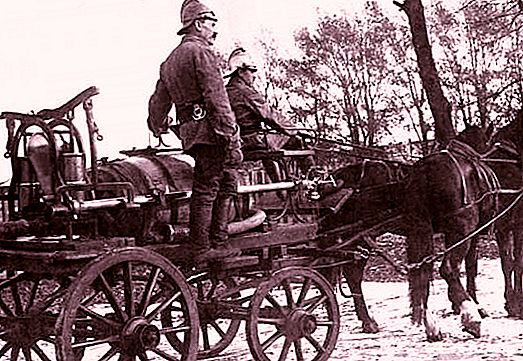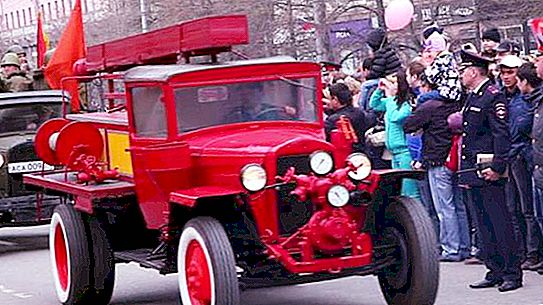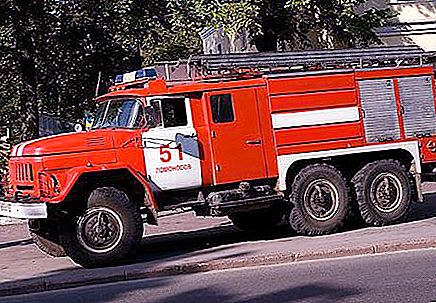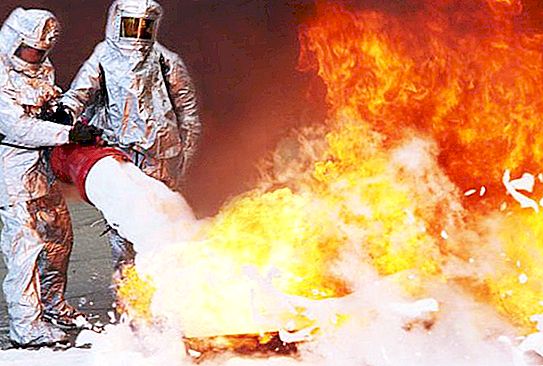Among all the disasters that visited the long-suffering Russia, the most frequent were fires, since for centuries the main building material from which urban and especially rural buildings were built was forest. Whether they were sent down from human sins from above, or arose by someone’s oversight, but they always had to be fought, and therefore the history of the fire department is inseparable from the history of our country.
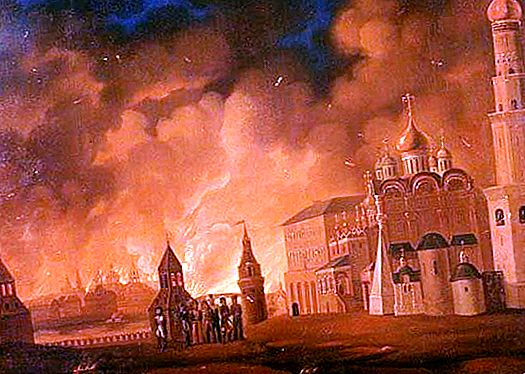
Fire fighting museums
The firefighting museums throughout the country tell about the ways fire development in Russia went. The largest of them, created in 1957, is located in Moscow on Durov Street. In the halls of the museum are collected exhibits that recreate the history of the fight against fire from the time of Ivan the Terrible to the present day.
No less interesting is the Museum of Fire Protection in St. Petersburg, located at 73 Bolshoy Prospect, V.O. Despite the fact that a review of the history of fire fighting in it covers a period starting from somewhat later times ─ the era of Peter I, his expositions are also of great interest and contain many unique exhibits. In addition, fire protection museums were created in Samara, Yekaterinburg, Yaroslavl, Ivanovo and Krasnodar. Each of them contains materials covering the development of not only the local fire service, but also the fight against fire in Russia.
In general, the collections of fire protection museums in Moscow, St. Petersburg, as well as a number of other cities of the country and the funds of historical archives allow us to recreate the picture of how Russians from ancient times tried to resist the fire disasters that regularly visited them.
Sovereign decrees aimed at combating fire
The history of the fire brigade, which is reflected in archival documents that have reached us, dates back to a number of decrees issued by the Grand Duke of Moscow, Ivan III ─ the grandfather of Ivan the Terrible, after a terrible fire that devastated the capital in 1472.
In them and subsequent normative acts, which saw the light in the Romanov era, it was strictly prescribed in the cities (and especially in the capital) to erect stone structures as far as possible and build them at a fire-safe distance from each other.
In addition, a number of other measures were listed aimed at preventing fires. With regard to violators of the highest decrees, and even more so those who became responsible for the fires, the most severe penalties were provided.
However, they didn’t whip in the squares of the townspeople who dared, contrary to the tsar’s decree, to cook at home in the hot summer months and make fire indoors, and the eternal Russian “avos” always prevailed over the elementary fire safety rules. As a result, fire disasters sometimes took on such terrifying proportions that they destroyed entire cities.
Terrible fires of past centuries
It’s enough to mention only a few events that the expositions of almost all of the above fire protection museums tell about ─ they had such serious consequences in the life of the state. First of all, this is the fire of 1212, which destroyed within a few hours 4300 yards of Veliky Novgorod. About a thousand townspeople became its victims.
In 1354, the fire that engulfed Moscow in two hours turned into the smoking ashes not only the Kremlin, but also the surrounding villages. Equally disastrous for the capital was the fire that occurred in 1547. Then several thousand inhabitants of the Mother See died in his fire.
Birth of the fire service of Russia
The answer to the challenge posed by the raging elements was the creation of special fire brigades in Russia. They were first established on the basis of a document developed in 1649 with the participation of Tsar Alexei Mikhailovich and dubbed the “Order on Urban Deanery”. According to its provisions, professional fire brigades appeared in all major cities of the country, the employees of which were paid the established salary.
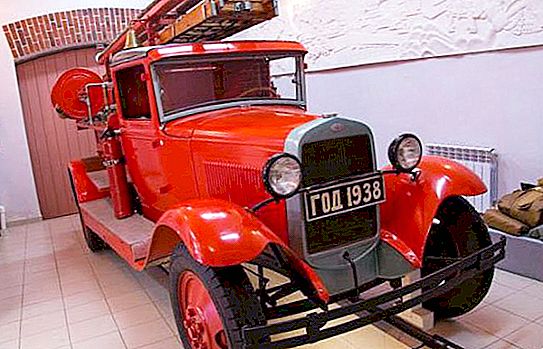
The same decree instructed fire brigade employees, in addition to conducting round-the-clock duty, to make preventive detours around territories under their jurisdiction and identify possible violators of the rules for handling fire. In addition, Tsar Alexei Mikhailovich became concerned about the creation of fire fighting means, having ordered the use of watering pipes for this purpose, which have become the prototype of the current water pipes.
A new stage in the development of the domestic fire service
The years of the reign of Peter I became the period when the organization of fire protection rose to a new qualitative level. In particular, fire-fighting equipment was modernized, many of which the tsar specially purchased abroad. Thanks to him, the first pumps equipped with leather sleeves and copper hoses appeared at the disposal of Russian firefighters.
Then at the Admiralty of St. Petersburg was established the first fire department in Russia. In Moscow, a regular fire service appeared relatively late. The decree on its creation was published by Alexander I only in 1804.
The fight against fire in the XIX century
The next emperor, Nicholas I, who ascended the throne in 1825, made sure that the regular fire service ceased to be the lot of only St. Petersburg and Moscow. Under him, fire fighting units appeared in almost all large settlements of the country.
An integral part of each fire department, Kalancha, in many cases became the tallest building in the city, from which it was possible to survey all nearby villages. In case of fire detection, a special flag and signal balls were raised on it, the number of which was directly proportional to the size of the source of ignition.
Significantly improved by that time and fire equipment. Many of its authentic samples can be seen both in the Moscow Museum of Fire Protection, and in the expositions of other complexes similar to it. In the 19th century, the equipping of fire departments with the necessary equipment was facilitated by the creation in Moscow and St. Petersburg of enterprises that established the production of not only fire pumps and hoses for them, but also all related equipment: folding stairs, hooks, and protective equipment needed for fire fighting.
Old helmets of firefighters, issued in the period of the XIX and the beginning of the XX century, are an indispensable attribute of almost all museums of similar subjects. An integral part of their expositions is also equipment, which came into use immediately, as soon as fire engines began to use cars that replaced horse-drawn traction.
Fire fighting measures taken by the Bolsheviks
In the St. Petersburg Museum of Fire Protection, a special place is given to the organization of the fight against fire in the post-revolutionary years. Authentic documents are presented there that tell about the establishment in April 1918 of the Commissariat for Insurance and Fire Fighting. Its first leader was M.T. Elizarov.
Thanks to his efforts, an extensive network of fire stations equipped with the latest equipment at that time was urgently created in the country. The following year, the government took additional measures to strengthen fire brigades. By order of the Council of People's Commissars in the structure of the NKVD, the most powerful organization of that period, they established the Central Department, which headed the leadership of the fire services of the whole country.
The history of fire fighting in the Soviet period
In 1924, the first fire school was opened in Leningrad, which laid the foundation for the creation of the personnel base on which the formation of a nationwide fire surveillance system took place in the future. Structures created subsequently on the initiative of the Komsomol and various trade union organizations took an important place in it. The most famous of them was the Volunteer Fire Brigade, whose branches soon appeared throughout the country.
The years of World War II, in which its fighters were at the forefront of the fight against fire, became the heroic page in the history of the fire service. It is known that in only Leningrad more than 2 thousand of them gave their lives. And it is no coincidence that in May 1945, the fighters of the fire brigades marched along Red Square along with all combat units.

